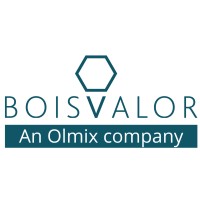Testing Mycotoxin binders efficacy was one of the main topics addressed by Olmix at the Virtual All About Feed Forum.
Mycotoxin risk has become one of the main challenges to be tackled by farmers and producers worldwide. It is considered that more than 25% of harvested cereals are contaminated with mycotoxins, which significantly impacts the technical and therefore economic performance of livestock. That is why the market is nowadays demanding reliable testing models and solutions to control the effect of mycotoxins on animals.
At the Virtual All About Feed Forum, held online on the 27th May, Olmix mycotoxin expert, Julia Laurain, delivered a speech on the matter, focusing on the impact of low to high contamination on animals, the in vivo models for low to high contamination, simple to complex mycotoxins, and the Algoclay solutions for a wide protection.

Wide spectrum absorbing agents & in vivo models
“The use of adsorbing agents is the most efficient strategy to reduce the effect of mycotoxins on animals. However, we have to make sure that we test the efficacy of our toxin binders properly.. To tackle the polycontamination issue we should bet on wide spectrum adsorbing agents which are able to bind large and complex one such as DON and FUM,” Laurain said.
The problem of mycotoxins involves several risks for animal health: the immune system sees itself in danger, there is higher sensitivity to infections and they even can alsoreduce vaccine efficacy, among others. When it comes to testing toxin binders to face all these challenges, both in vitro and in vivo experimental models are on the table.
“In vitro tests are very attractive as they are easy and cheap to implement, but they are also very variable and not as reliable as in vivo models. In vivo models have the advantage to evaluate toxin binders in real conditions even if there is not always direct measurement of binding. In vivo models are mostly based on performances criterions that are more practical and meaningful for farmers.”

Nowadays, several in vivo experimental models are applied and used worldwide for different animals and based on different methods. Among them, there is one in particular, the in vivo model from the Samitec Institute in Brazil, which has proved to be very reliable. Along with this institute, Olmix has obtained very good results with the Algoclay technology, which is a combination of algae and montmorillonite that allows to significantly increase the space between clay layers.
Some results with Algoclay technology
“We have some excellent results obtained with this Algoclay technology. We have carried out several trials in all species to test the efficacy of these patented technology under specific experimental conditions. In all cases it was observed that both performances and liver parameters were strongly affected by the presence of mycotoxins, which even led the animals to suffer losses in terms of feed intake and body weight. Results show that this technology successfully helps to mitigate these effects and permits animals to fully recover,” Laurain said.

Conclusions
As a summary, Laurain explained that “We have to be careful with in vitro test as they are not always representative to the reality and can lead to bad choices and conclusions.”
According to the expert, the mere presence of mycotoxins in the farm presents a risk for animals and their performance so it is of utmost importance to have the right tools to cope with any issues related to mycotoxin risk. So, a wide spectrum toxin binder is always a must as mycotoxins are always present in polycontamination scenarios.




